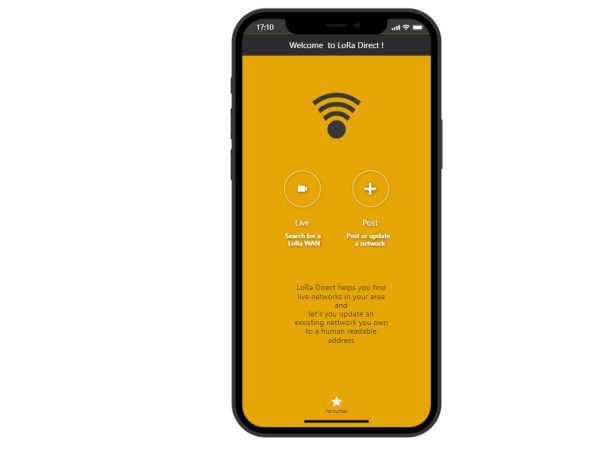| (10 révisions intermédiaires par le même utilisateur non affichées) | |||
| Ligne 2 : | Ligne 2 : | ||
|Main_Picture=LoRa_Direct_Home_screen.png | |Main_Picture=LoRa_Direct_Home_screen.png | ||
|Main_Picture_annotation={"version":"2.4.6","objects":[{"type":"image","version":"2.4.6","originX":"left","originY":"top","left":105,"top":-2,"width":933,"height":911,"fill":"rgb(0,0,0)","stroke":null,"strokeWidth":0,"strokeDashArray":null,"strokeLineCap":"butt","strokeDashOffset":0,"strokeLineJoin":"miter","strokeMiterLimit":4,"scaleX":0.5,"scaleY":0.5,"angle":0,"flipX":false,"flipY":false,"opacity":1,"shadow":null,"visible":true,"clipTo":null,"backgroundColor":"","fillRule":"nonzero","paintFirst":"fill","globalCompositeOperation":"source-over","transformMatrix":null,"skewX":0,"skewY":0,"crossOrigin":"","cropX":0,"cropY":0,"src":"https://wikifab.org/images/e/e0/LoRa_Direct_Home_screen.png","filters":[]}],"height":449.68684759916493,"width":600} | |Main_Picture_annotation={"version":"2.4.6","objects":[{"type":"image","version":"2.4.6","originX":"left","originY":"top","left":105,"top":-2,"width":933,"height":911,"fill":"rgb(0,0,0)","stroke":null,"strokeWidth":0,"strokeDashArray":null,"strokeLineCap":"butt","strokeDashOffset":0,"strokeLineJoin":"miter","strokeMiterLimit":4,"scaleX":0.5,"scaleY":0.5,"angle":0,"flipX":false,"flipY":false,"opacity":1,"shadow":null,"visible":true,"clipTo":null,"backgroundColor":"","fillRule":"nonzero","paintFirst":"fill","globalCompositeOperation":"source-over","transformMatrix":null,"skewX":0,"skewY":0,"crossOrigin":"","cropX":0,"cropY":0,"src":"https://wikifab.org/images/e/e0/LoRa_Direct_Home_screen.png","filters":[]}],"height":449.68684759916493,"width":600} | ||
| − | |Description=<translate>A peer-to-peer LoRa network analyser - by team Ikonko</translate> | + | |Description=<translate>A peer-to-peer LoRa network directory & analyser - by team Ikonko</translate> |
|Area=Electronics, Robotics | |Area=Electronics, Robotics | ||
|Type=mobile application | |Type=mobile application | ||
| Ligne 13 : | Ligne 13 : | ||
}} | }} | ||
{{Introduction | {{Introduction | ||
| − | |Introduction=<translate>Because LoRa networks are fast, easy and cheap to set up and can provide a network of up to 10 square kilometers, our solution is an application that will allow people to find LoRa networks that are available in their area, find public or free networks, return detailed information about available networks | + | |Introduction=<translate>Because LoRa networks are fast, easy and cheap to set up and can provide a network of up to 10 square kilometers, our solution is an application that will allow people to find LoRa networks that are available in their area. Potential users are people without access to internet in rural/remot areas, and urban areas experiencing power outages. |
| + | |||
| + | User will be able to find public or free networks, return detailed information about available networks, and favourite networks for ease of connection in future. LoRa gateway providers can customise how their network appears to others by providing a human-readable name, they can privatise their network for possible monetisation in the future. They can update features should they upgrade their gateway device.</translate> | ||
}} | }} | ||
{{TutoVideo | {{TutoVideo | ||
|VideoType=Mp4 | |VideoType=Mp4 | ||
| + | |mp4video=Demo | ||
}} | }} | ||
{{Materials | {{Materials | ||
| Ligne 23 : | Ligne 26 : | ||
{{Tuto Step | {{Tuto Step | ||
|Step_Title=<translate>Find a network</translate> | |Step_Title=<translate>Find a network</translate> | ||
| − | |Step_Content=<translate>A user can | + | |Step_Content=<translate>A user can type in a region name, the application finds networks that have the region name as a tag. This feature pulls data of registered LoRa networks from 'the things network' database.</translate> |
}} | }} | ||
{{Tuto Step | {{Tuto Step | ||
|Step_Title=<translate>Select a network</translate> | |Step_Title=<translate>Select a network</translate> | ||
| − | |Step_Content=<translate>Public networks are open, private are categorised separately as they may be password protected</translate> | + | |Step_Content=<translate>Public networks are open, while private networks are categorised separately as they may be password protected</translate> |
}} | }} | ||
{{Tuto Step | {{Tuto Step | ||
|Step_Title=<translate>Favourite a network</translate> | |Step_Title=<translate>Favourite a network</translate> | ||
| − | |Step_Content=<translate>The network details will be bookmarked on your application so that you can automatically connect in future</translate> | + | |Step_Content=<translate>The network details will be bookmarked on a page in your application so that you can automatically connect to in future</translate> |
}} | }} | ||
{{Tuto Step | {{Tuto Step | ||
|Step_Title=<translate>Post about an existing network</translate> | |Step_Title=<translate>Post about an existing network</translate> | ||
|Step_Content=<translate>If you are a LoRaWAN gateway provider or owner you can update details about your device, coverage and/or add comments for the public</translate> | |Step_Content=<translate>If you are a LoRaWAN gateway provider or owner you can update details about your device, coverage and/or add comments for the public</translate> | ||
| + | }} | ||
| + | {{Tuto Step | ||
| + | |Step_Title=<translate>Privatise your gateway</translate> | ||
| + | |Step_Content=<translate>An additional feature for the future is monetisation of private networks so that network owners can allow potential users to pay for access to the network</translate> | ||
}} | }} | ||
{{Notes | {{Notes | ||
| − | |Notes=<translate></translate> | + | |Notes=<translate>https://pages.services/pages.lora-alliance.org/lorawan-for-good/ |
| + | |||
| + | https://www.thethingsnetwork.org/</translate> | ||
}} | }} | ||
{{PageLang | {{PageLang | ||
Version actuelle datée du 13 décembre 2020 à 18:56
Introduction
Because LoRa networks are fast, easy and cheap to set up and can provide a network of up to 10 square kilometers, our solution is an application that will allow people to find LoRa networks that are available in their area. Potential users are people without access to internet in rural/remot areas, and urban areas experiencing power outages.
User will be able to find public or free networks, return detailed information about available networks, and favourite networks for ease of connection in future. LoRa gateway providers can customise how their network appears to others by providing a human-readable name, they can privatise their network for possible monetisation in the future. They can update features should they upgrade their gateway device.Mp4
Demo
Matériaux
Outils
Étape 1 - Find a network
A user can type in a region name, the application finds networks that have the region name as a tag. This feature pulls data of registered LoRa networks from 'the things network' database.
Étape 2 - Select a network
Public networks are open, while private networks are categorised separately as they may be password protected
Étape 3 - Favourite a network
The network details will be bookmarked on a page in your application so that you can automatically connect to in future
Étape 4 - Post about an existing network
If you are a LoRaWAN gateway provider or owner you can update details about your device, coverage and/or add comments for the public
Étape 5 - Privatise your gateway
An additional feature for the future is monetisation of private networks so that network owners can allow potential users to pay for access to the network
Notes et références
https://pages.services/pages.lora-alliance.org/lorawan-for-good/
https://www.thethingsnetwork.org/
Draft

 Français
Français English
English Deutsch
Deutsch Español
Español Italiano
Italiano Português
Português